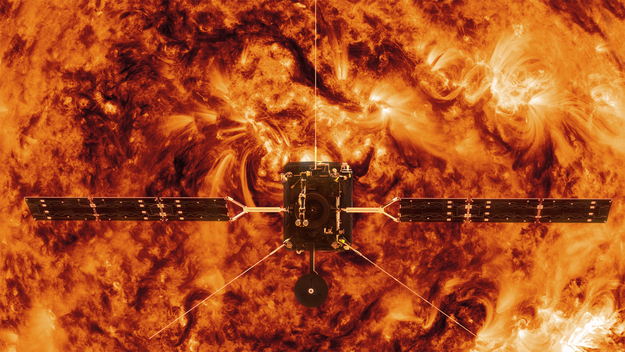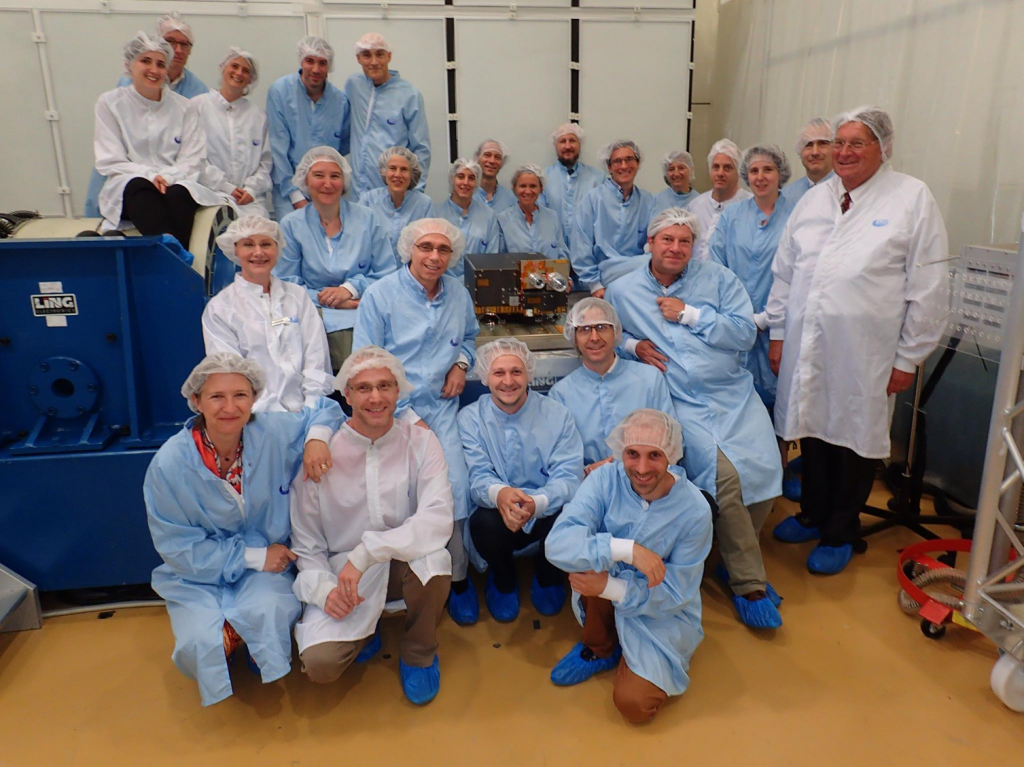10 February 2020 — Launch of Solar Orbiter
NASA will launch the Solar Orbiter spacecraft from Cape Canaveral, with 10 scientific instruments on board, including the space telescope Extreme Ultraviolet Imager (EUI). Solar Orbiter is an ESA mission, with an important contribution from NASA, which will study the Sun from close up. The EUI instrument was built by a European consortium under the leadership of the Centre Spatial de Liège. After the launch, the Royal Observatory of Belgium will manage the observations and coordinate the analysis of its unique solar images.
Belgian scientists will be present in Florida at the launch, a crucial step in the EUI project. Some eight weeks later, another milestone will follow when the telescope doors will open for the first time. It is only during this ‘First Light’ moment that the EUI team will know whether the telescope survived the launch and is working properly.
By making several Venus flybys in the coming years, the Solar Orbiter spacecraft will use the gravity of the planet to approach the Sun. The EUI telescope will then be able to film the outer solar atmosphere in higher resolution than ever before. The EUI images will be exceptionally sharp such that details of a few hundred kilometres large in the solar atmosphere can be studied. Later on, the gravity of Venus will be used to tilt its orbit and to enable EUI to take images from a polar perspective, something that has never been done before.
Studying the solar poles is of great scientific importance for understanding the Sun’s magnetism and the solar activity cycle. The solar cycle lasts about 11 years and takes us from a ‘low solar season’ with few solar storms to a ‘high solar season’ with more frequent solar storms. Technology on Earth can be seriously disrupted by these solar storms, which are studied in the context of “space weather”. By visualising the poles and magnetic forces, the EUI instrument will contribute to unravelling the secrets of the solar cycle.
Partners
The EUI project was launched in 2008 under the scientific leadership of the Royal Observatory of Belgium and the technical leadership of the Centre Spatial de Liège. EUI was developed by a European consortium with significant contributions from France (Institut d’Astrophysique Spatiale), Germany (Max-Planck-Institut für Sonnensystemforschung), the United Kingdom (UCL-Mullard Space Science Laboratory) and Switzerland (Physikalisch-Meteorologisches Observatorium Davos/World Radiation Center). The Belgian contribution was funded by BELSPO (Federal Science Policy Office) through ESA/PRODEX.
More information:
Launch: Cape Canaveral (Florida, US), Sunday 9 February, 23:03 EST (local time). This corresponds to Monday 10 February, 05:03 CET (Belgian time). The launch can be followed live online on ESA TV: https://www.esa.int/ESA_Multimedia/Transmissions/2020/02/Solar_Orbiter_launch_from_Cape_Canaveral
EUI website: http://sidc.be/EUI
Follow the EUI Twitter account: https://twitter.com/EuiTelescope
For the ‘First Light’, the Belgian partners will organise an event for the press. This will take place mid-May 2020.


